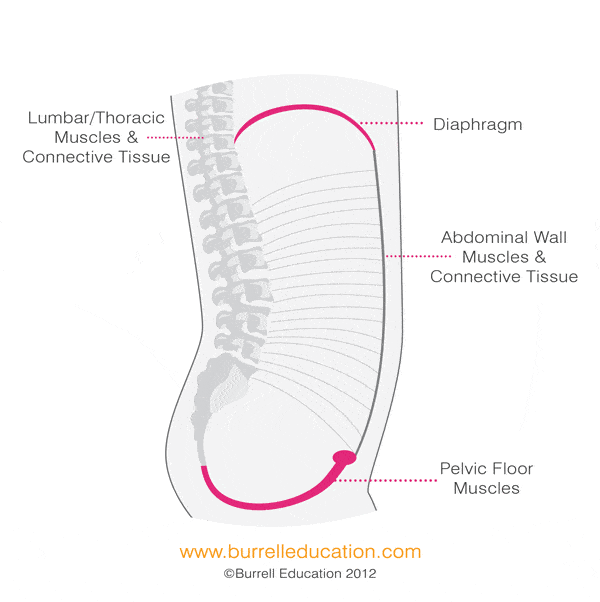Stress urinary incontinence occurs when you cough, laugh, sneeze or lift something heavy (the stress), and some urine escapes (incontinence). There are a few different causes of stress urinary incontinence, from a weak pelvic floor to low oestrogen.
Women tend to develop stress urinary incontinence as early as their 20s and 30s, and simply having poor posture and sitting down all day can be as much a cause as having a baby or age-related tissue weakness.
You do not have to live with stress urinary incontinence. It is not ‘just part of being a woman’, having a baby, or getting older.
First you need to figure out why you have stress urinary incontinence, and this often means a visit to your doctor, osteopath or pelvic physiotherapist.
You will be examined, and any complications can be ruled out or dealt with. Each of you has a unique set of things going on with your body, and this needs to be taken into account when understanding why you have urinary incontinence.
A proper diagnosis means that effective treatments can be implemented as soon as possible, and you can laugh with wild abandon once again.
Symptoms of stress urinary incontinence
Stress urinary incontinence is a symptom of something else, not a disease on its own. The key diagnostic for this label is that some urine escapes your urethra when you laugh, cough, sneeze, or lift something heavy, and not at other times.
Causes of stress urinary incontinence
- Breathing incorrectly (holding your tummy muscles tight to seem thinner, holding your breath to stabilise yourself, shallow breathing)
- Loss of oestrogen (menopause, some medical treatments, loss of ovaries without hormone therapy)
- Age-related collagen degradation and loss
- Trauma to pelvic tissue (pregnancy, labour)
- Surgical interventions that cause trauma or damage to tissue, pelvic surgeries
- Caucasian women are at a greater risk of stress urinary incontinence
- Obesity
There are two specific causes of stress urinary incontinence.
- Hypermobile urethra
- Muscle weakness
Other forms of urinary incontinence
- Urge urinary incontinence (overactive bladder)
- Mixed urinary incontinence
Treatments for stress urinary incontinence
The simplest and cheapest experiment treatment for stress urinary incontinence is to do pelvic floor exercises each day and check you are breathing correctly (more on this below).
If you have developed stress urinary incontinence over time, adding in correct pelvic floor exercises to your daily routine can make a massive difference very quickly. That could mean contracting and relaxing in equal measure when you shower or do the dishes each day.
If it helps, which will only take about a week to figure out, keep doing it. If not, see someone sooner rather than later to avoid giving yourself further issues. But a word of warning on pelvic floor exercises.
If you over-train your abdominal and pelvic floor muscles, you may end up with pelvic pain, painful vaginal penetration (vaginismus) during sex or using tampons, and constipation.
Using your muscles properly – contracting and relaxing in equal measure – is more important than having strong muscles per se. You are not aiming for the vaginaheavyweight championships, you just want a properly toned set of muscles.
When everything is working together properly, your pelvic floor muscles tend to take care of themselves, in the same way you do not need to ‘exercise’ your diaphragm, tongue or feet, for example.
The fastest way to get an accurate assessment is to visit a pelvic physiotherapist, osteopath or other physical practitioner who can guide you correctly and who knows what they are talking about.
If you have a complicated medical history, have damage to tissue, previous surgeries or other complicating factors, you still need to do your pelvic floor exercises, but you will need the help of your doctor, possibly a specialist, and a pelvic physiotherapist.
Typical treatments for stress urinary incontinence include:
- Pelvic floor exercises
- Breathing training
- Lifestyle modifications
- Bladder training
- Oestrogen therapy as applicable
- Radiofrequency and/or laser treatments can be extremely effective for some women
- Surgical interventions if necessary
- Some new drug treatments have been approved
Understanding your pelvic floor muscle and how it relates to your breath
The set of muscles that hold our pelvic structures in place is called the pelvic floor or the pelvic diaphragm. It’s the ‘floor’ of our pelvis that holds everything up and together, and is one of the most important set of muscular structures we have.
The pelvic floor muscle works as you breathe in the same way that your diaphragm contracts and relaxes with your lungs to breathe.

How the pelvic floor works with your breath (diaphragm)
- As you breathe in, the pelvic floor relaxes, stretches and drops to allow all your insides (organs) to move down to accommodate the air.
- Your belly (abdominal muscles) should be relaxed, and go out to allow the air fully into your body. This is called diaphragmatic breathing or belly breathing.
- Women tend to hold their stomachs in to try to seem thinner, but you have to stop doing this! It puts immense pressure on your pelvic floor, which stays tight, instead of relaxing. You’re cramping its style.
- The diaphragm in your chest contracts to lift your rib cage out and up, spreading your ribs, to allow extra space for the air to come in, while the pelvic floor relaxes.
- You need to open the space in your abdomen to allow your lungs to fill with air.
- The pelvic floor and the diaphragm work in concert, one going up while the other goes down, one going tight while the other relaxes. Breathe in, breathe out.
As you breathe out, the pelvic floor muscles contract back into place to keep you stable once again, and the diaphragm under your lungs relaxes.
It’s a coordinated movement that to work efficiently, must work together. Making sure you are breathing properly is an important part of your pelvic floor health.
If you’ve ever heard of diaphragmatic breathing, then you know what to do. This sets you up in the proper rhythm that keeps your pelvic floor and diaphragm happy. Strong pelvic floor muscles doesn’t mean that your upper and lower diaphragms are coordinated, which is what you are aiming for.
How to do your pelvic floor exercises for stress urinary incontinence
You need to make sure you are working on the right muscles when you do your pelvic floor exercises. Pick a time in the day when you will do your pelvic floor exercises each day, for example in the shower, walking to work or school, or when you do the dishes.
Clench, hold, release.
Do different combinations of hold times, for example try to hold for longer each time, go fast, go slow. Over the coming weeks, you’ll notice that you can hold for longer and longer at a time.
You’ll also notice very quickly that your stress urinary incontinence improves dramatically with your consistent efforts. If it doesn’t, see someone for help. A simple rule is just try to hold it for 10 seconds, relax for 10 seconds, repeat 10 times each day.
Lifestyle mods to help prevent leaking urine
- Learn how to breathe properly to engage your upper and lower diaphragms correctly
- Limit urinary tract irritants/stimulants like coffee and alcohol
- Don’t drink too much liquid during the day
- Urinate regularly to prevent your bladder getting really full
- If weight is an issue for you, take the steps you need and get help to lose weight – gravity is not your friend!
- Smoking can cause tissue and blood vessel weakness, so if you’ve been trying to quit, try again – you’ll get there eventually
The most comprehensive vaginal microbiome test you can take at home, brought to you by world-leading vaginal microbiome scientists at Juno Bio.
Unique, comprehensive BV, AV and 'mystery bad vag' treatment guide, one-of-a-kind system, with effective, innovative treatments.
Promote and support a protective vaginal microbiome with tailored probiotic species.






